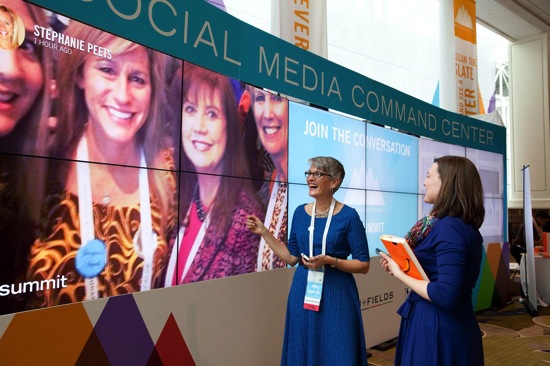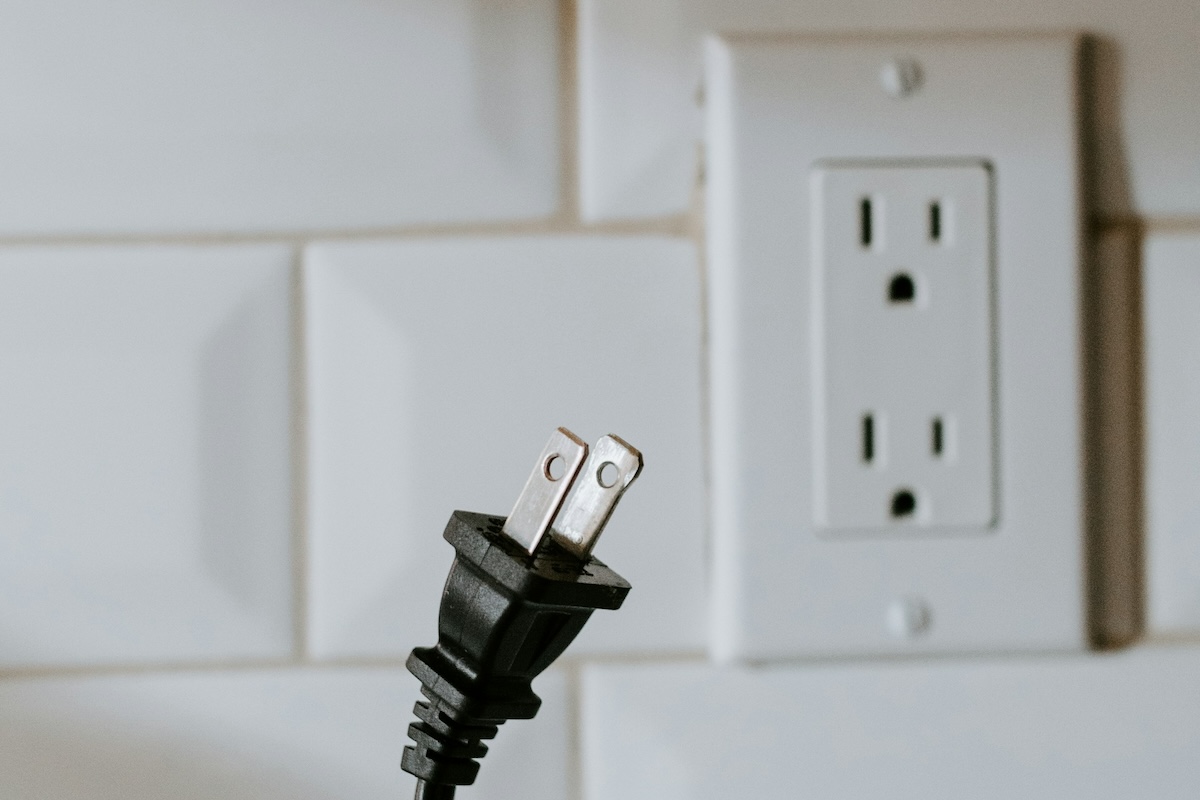This is a sponsored post written by by Justin Garrity, SVP of Postano.
More information about Event Manager Blog’s sponsored posts
Events have dozens of crucial components that must be executed well to be a smash hit. One key component in 2014 has to be social media. Whether you’re organizing a 50 person Meetup or a 10,000 person conference, social media should play a big part in your plans.
A well-executed social strategy can benefit all stakeholders by increasing attendee involvement, expanding the event’s exposure and providing organizers with new sponsorship offerings. At any given event, conference, or trade show there are multiple participant touch points where a social media display can be used to enhance the experience. Take a look at our top five suggestions for where to include social at your next event.
1. Event Entrance
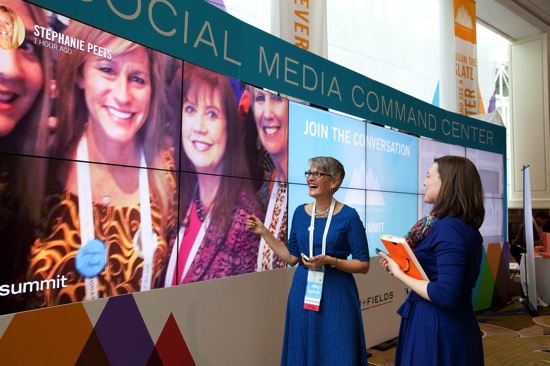
Capitalize on the excitement that attendees have as they enter the event with a social media center in the lobby of your venue. It is a great way to generate excitement and motivate attendees to join in the conversation right away. It also reaches the maximum number of participants as people come and go throughout the length of the event. This is the best place to establish your hashtag and increase your social visibility.
2. Social Signage
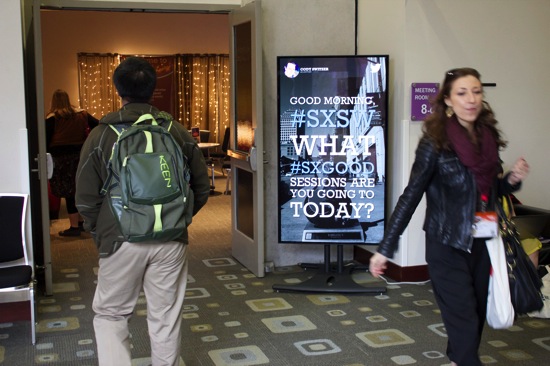
Take advantage of bare walls and room entrances by displaying relevant and engaging social content. These displays can be used to display interstitials, with event information, schedules, updates, and advertisements.
The best social displays are not simple widgets or hard-to-read Twitter streams, but fully branded visualizations built with custom fonts and designs that match the overall aesthetic of your event.
3. Stages
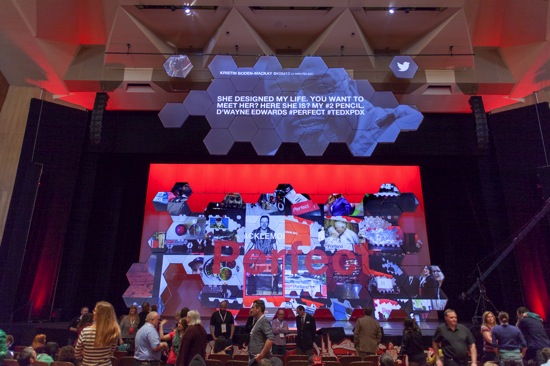
Put social in the spotlight on event stages to support the topic of conversation in real time. Pose questions to be answered via Twitter or Instagram, or bring in product content or imagery that adds depth to the presentation. By using a social visualization as a backdrop, viewers are presented with a much more dynamic experience than a static image or logo.
Social content can also be showcased between speakers or topics on screen real estate that is already in place. This is the perfect time to promote the event hashtag, feature the best tweets, mix in sponsored content and keep the energy and interest peaked during downtime.
4. Social Lounges
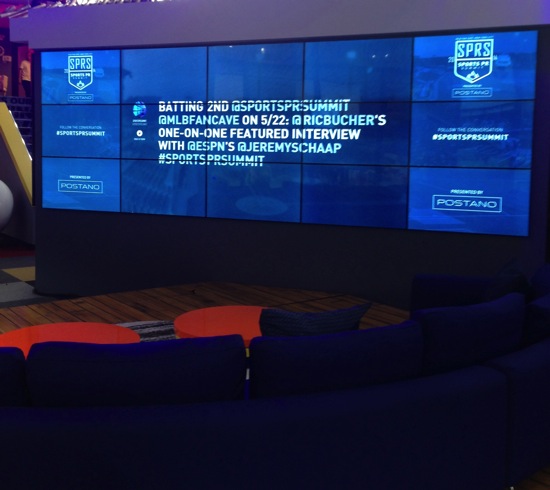
Lounges and charging stations are typically fairly unexciting. Transform these otherwise humdrum spaces into social lounges where attendees can not only recharge, but see what is happening around the event as a whole. They can take a break in the day, check in and share thoughts and photos while the event is occurring. Include signage with the event specific hashtag in these spaces to prompt involvement.
5. After Parties
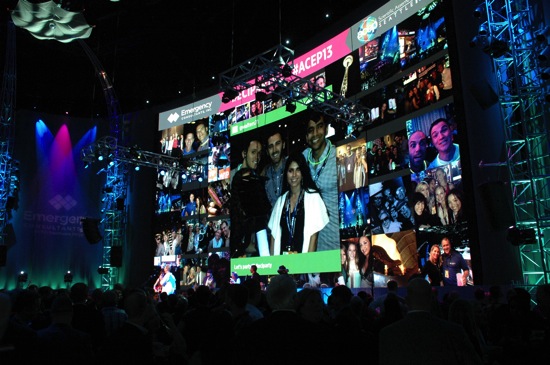
What part of an event is more social than the networking sessions or after parties? It’s the time where attendees are more relaxed and ready to have some fun. Highlight insights and questions from the events to get people connecting even more with social displays that are great conversation starters.
What better way to celebrate your attendees than putting them up on the big screen? Selfies with new friends and coworkers hanging out up provides excellent show content and increases the interactive experience.
Bonus: Social Hub
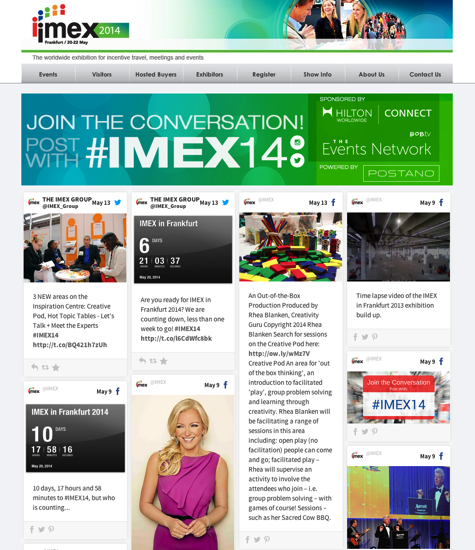
You don’t just want guests to attend an event and leave, the goal is to build and solidify these relationships for future engagements. Keep the conversation going 24/7, 365 days a year with the inclusion of a website Social Hub. The Social Hub also takes your event virtual, expanding it’s reach to those not attending, building interest for future events and increasing the visibility of your brand.
In Conclusion
While simply having a Twitter stream or Facebook page for your event is a great start, it’s not utilizing the full power of social. With so many possible locations for social media displays, it is one of the most beneficial tools that event marketers can use to advertise events, engage with attendees throughout, and continue to strengthen the relationships year-round.
